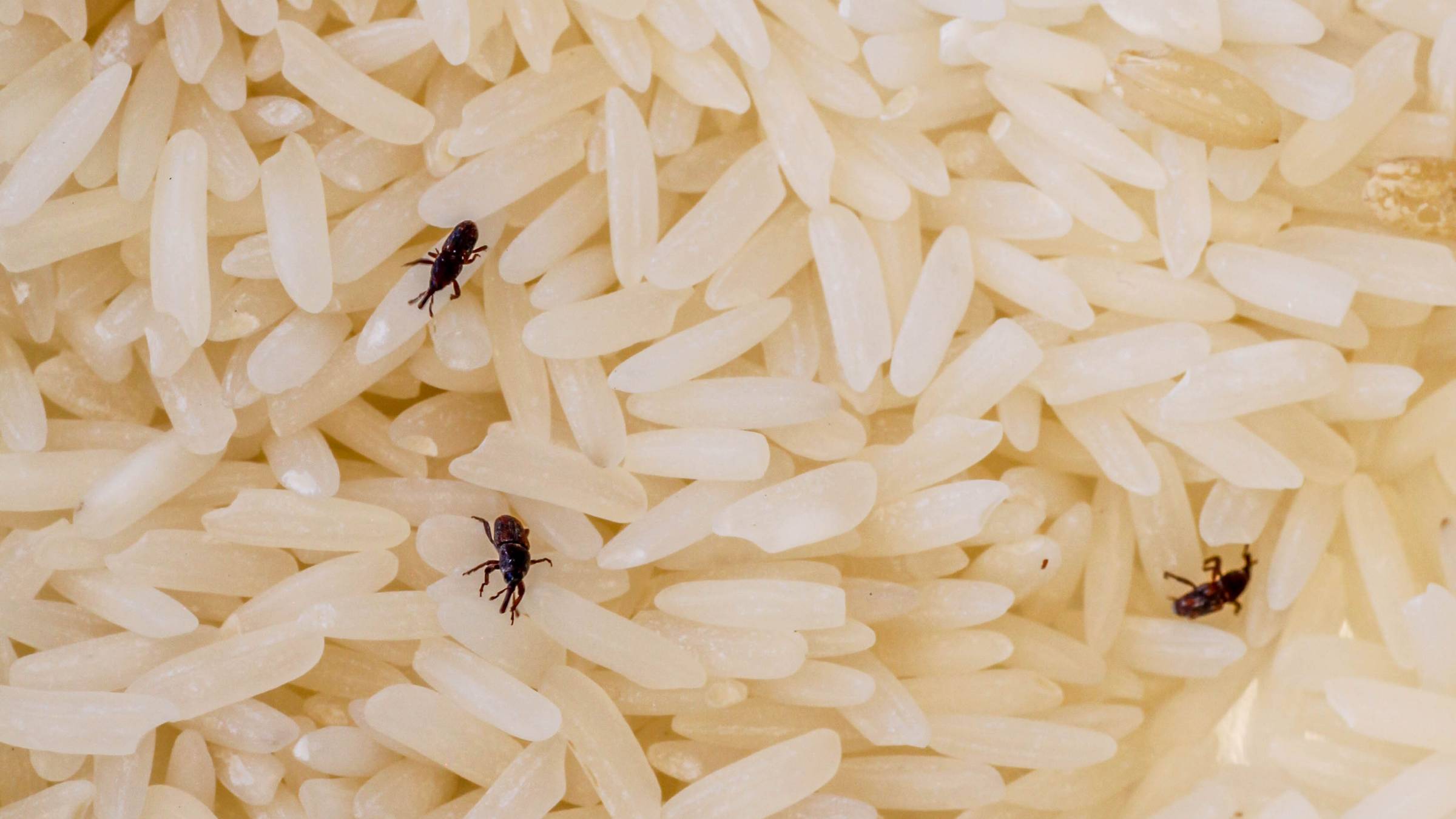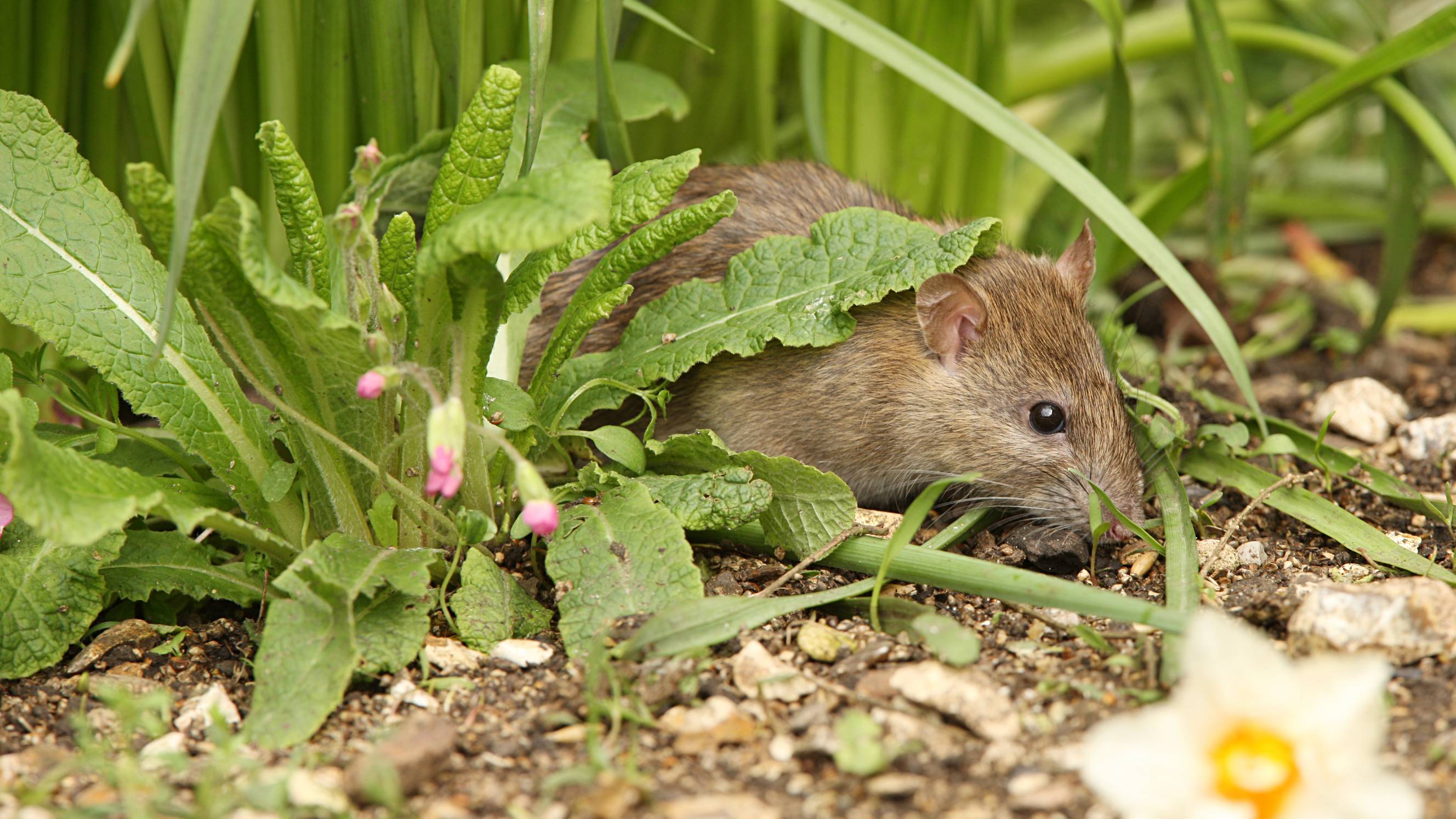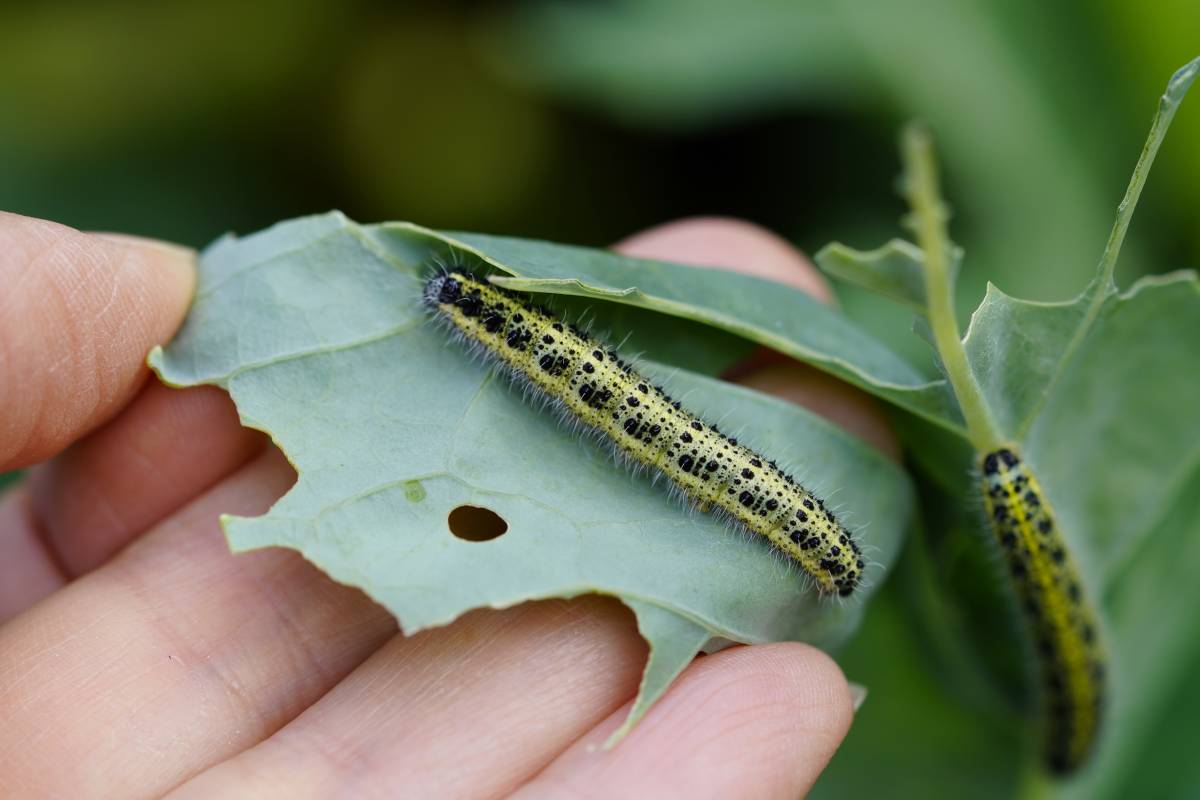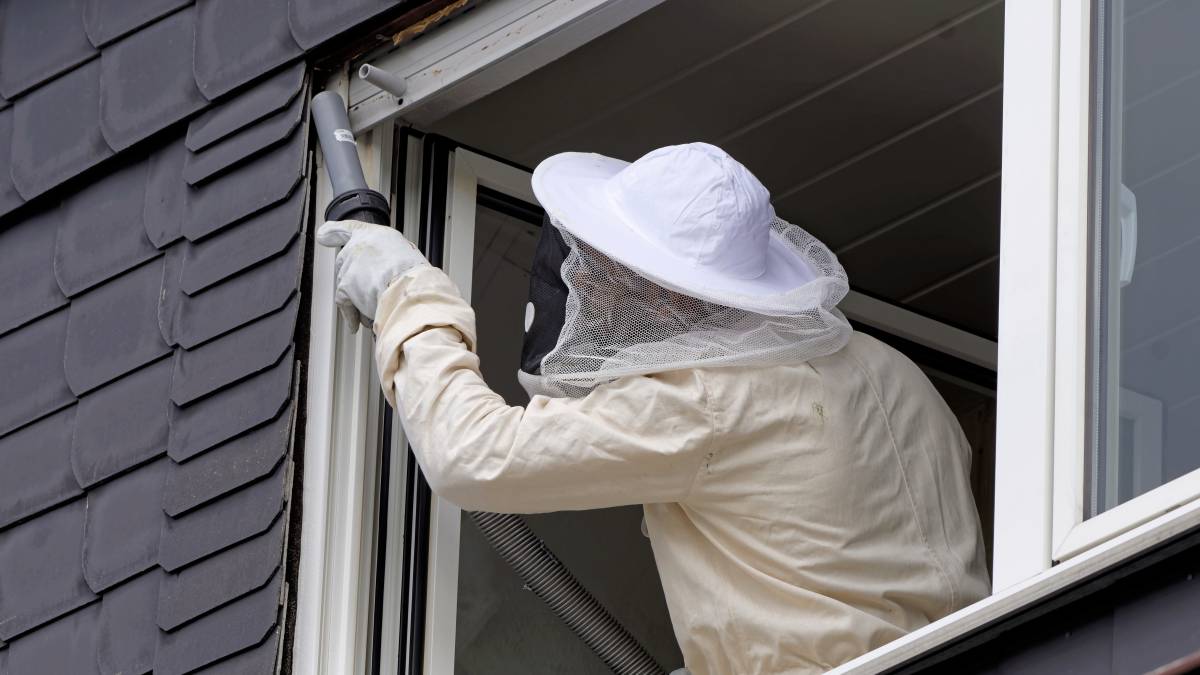- Home/
- Guides/
- Pest Control/
- How to Get Rid of Pantry Moths
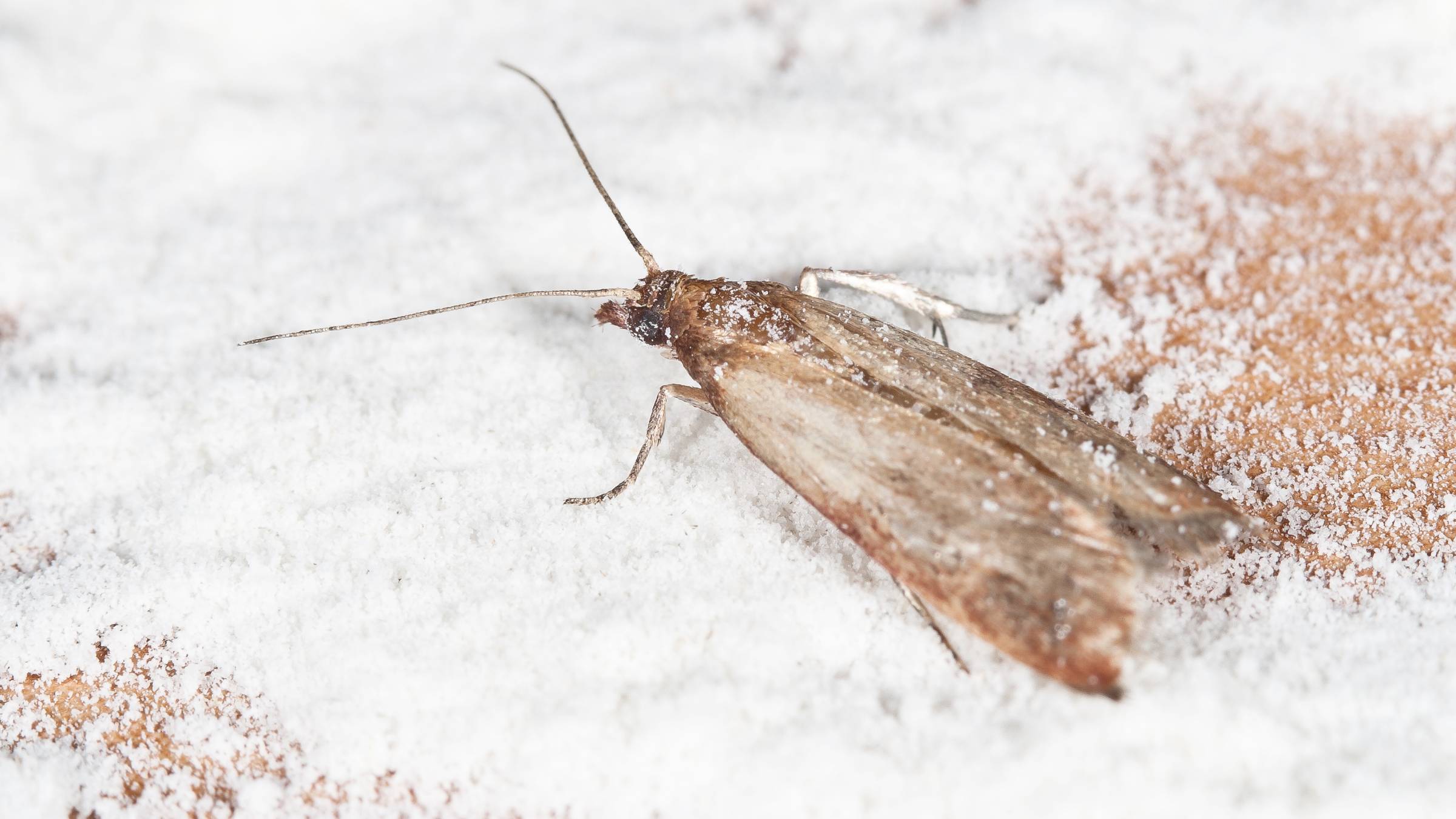
Banishing pantry pests: How to achieve a moth-free kitchen
A step-by-step guide to getting rid of pantry moths
Hire a pest control expertLast Updated on
Key Steps
- Throw away all infested food. Even a small amount of infested food can lead to a re-infestation.
- Clean your pantry thoroughly. This includes wiping down all shelves, drawers, and surfaces with hot soapy water.
- Use pantry moth traps. Pantry moth traps can help to catch adult moths and prevent them from laying eggs.
Pantry moths are technically harmless insects because they do not transmit diseases to humans and animals. However, they are still unwelcome guests, so you might want to learn how to get rid of pantry moths forever.
These tiny moths can contaminate food packaging, damaging your food supply. And because they reproduce fast in only a few weeks, controlling an infestation can become challenging, especially if you want to remodel your kitchen.
If you do not want to keep on throwing away your stored food items, read this guide. Use this, too, to understand why you should hire pest control experts to get rid of pantry moths forever.
Signs of a pantry moth infestation

There are at least three different species of pantry or food storage moths:
Indian meal moth (Plodia interpunctella)
Tropical warehouse moth (Ephestia cautella)
Mediterranean flour moth (Ephestia kuehniella)
Of the three, the Indian meal moth is the most common.
How do you know that cupboard moths hang around in your kitchen? There are telltale signs, which can appear depending on the pantry moth life cycle:
As their name suggests, pantry moths are in the kitchen, especially in unsealed or poorly sealed containers and bags. They are particularly attracted to high-carbohydrate food items. These include grains, dried fruits, breakfast cereals, and bread.
The female pantry moth can lay eggs between 400 and 500 at any given time, making food infestation easy and fast. These pantry moth eggs are very small (hardly an inch) and white-grey in colour. They also usually hatch within one to two weeks.
The eggs of the pantry moths hatch, and out come the larvae. They usually measure 17mm with a dark encapsulated head and three legs. They are found inside or near the food source, such as the kitchen cupboards and shelf liners. They will feed on the infested food for 6 to 7 weeks, depending on the temperature (although their ideal temperature is at least 26 degrees).
After the larvae stage, they build a cocoon and enter the pupal stage. At this point, you might notice suspicious webs on top of the dry foods and nooks and crannies of containers. They remain inside for around 14 days.
After two weeks, they become adult moths. Although they remain small and grey, their wings expand to over 1 cm. These wings can also have pale grey and reddish brown hints on the outer parts. You will rarely find the adults in the pantry now since they do not have mouths and no longer eat. However, they are more visible in various light sources, where they mate and reproduce.
Preparing to get rid of pantry moths
Pantry moths have a short lifespan, which is only between one and three months. However, because they can produce many moths at once (and up to eight generations), they can overtake your kitchen and home quickly.
In the meantime, you can take some steps to get rid of pantry moths. Here are the supplies or equipment you need to make pantry moth traps or apply pantry moth treatment:
White vinegar and warm water
Essential oils, such as bay leaf or peppermint oil
Airtight containers
Vacuum cleaner
Cleaning supplies, such as a scrub brush and soapy water
Caulk or sealant
Diatomaceous earth (DE)
How to kill pantry moths naturally

Usually, when people deal with pest infestations, they immediately think about using chemicals to kill them. While these supplies might be helpful, they might not be ideal for pantry moths, especially if they are in your kitchen where you store cutlery, plates, and food.
A qualified, reliable, and expert exterminator also considers natural ways of getting rid of these pesky insects. You can try some at home if their numbers are still manageable.
Here is how to get rid of pantry moths naturally:
Conduct an investigation. If your food smells rancid (or 'off'), you should investigate further for any presence of pantry moths. The best way to do this is to hire a professional with the knowledge and tools to do it accurately.
Discard the infested food and packaging. Because these moths do not only number to hundreds quickly but can also move from one food to another conveniently. If one of the storage containers or food items already has traces of these moths (remember how they look in every pantry moth life cycle), isolate and throw them away. Do the same for those near the infested ones.
Clean the area thoroughly. Use a vacuum cleaner to eliminate crumbs and debris left in your pantry. Pay special attention to corners and crevices where adult moths might have laid their eggs or the pantry moth larvae are growing.
Use diatomaceous earth (DE). This fine powder from fossilised remains of diatoms, a type of algae, can absorb the oils and fats of the moth’s exoskeletons. In the process, it dehydrates and dies. To use this pantry moth killer, sprinkle enough around the edges and in the corners of your pantry or food storage area. Do not forget to use food-grade DE and wear a mask to avoid inhaling the powder and irritating the lungs.
Wipe the area with a vinegar mixture. You can make a mild disinfectant to wipe your pantry shelves by combining equal parts hot water and white vinegar. To deter the hatching of eggs or the growth of larvae, use undiluted vinegar.
Transfer dry goods. If you are lucky enough to save some food products (ensure they do not have any traces of the moths), move them to brand-new or clean airtight containers, including glass jars with hermetic seals. This helps prevent the remaining moths from having food.
Caulk or seal gaps. Seal gaps and cracks in the pantry or food storage area to prevent pantry moths from entering.
Inspect nearby rooms. Inspection remains highly likely if you have one pantry moth at home. Check other rooms for the insect’s presence, such as adult moths flying near light sources.
Using pantry moth traps
Another way of naturally getting rid of pantry moths is to use traps, which can be either or all of the options:
Pheromone trap. This one emits pheromones, or chemicals that can act like hormones or elicit a biological response from other insects like the opposite sex. It can lure male pantry moths to the trap, where they get stuck and cannot escape.
Light trap. It uses a light source, which can be actinic or mercury vapour, to lure moths. It further lures the insects nearer until they can be diverted into a box.
DIY trap. This one uses a plastic container with a wide opening. Inside is a mixture of dish soap, water, and a light source. The light attracts the moths until their body parts touch the dish soap, ultimately trapping them.
How to prevent another pantry moth infestation
Although you have many ways to remove the pantry moths at home, prevention will always be better than what could be a costly cure. Consider these ideas on how to eliminate pantry moths:
Put some pantry moth traps around the house. In particular, add some to your kitchen. Although moths can enter your home via windows and doors, they often hitch a ride on your grocery items, especially unsealed ones.
Keep your food containers closed. Check for any cracks on the lid and the body if you use plastic. Opt for glass jars where you can quickly see the contents and any possible presence of pantry moth eggs or larvae.
Repeat the three-step process regularly. Clean, inspect, and freeze dry goods every few months to prevent infestation. For thorough cleaning, you can use equal parts water, vinegar, and a few drops of essential oils to get rid of pantry moths, such as peppermint.
Keep your kitchen clutter-free. With good pantry and kitchen organisation, you can easily spot any problems with your foodstuff and storage. You are also more likely to keep up with your cleaning routines.
Achieve a moth-free kitchen with Airtasker
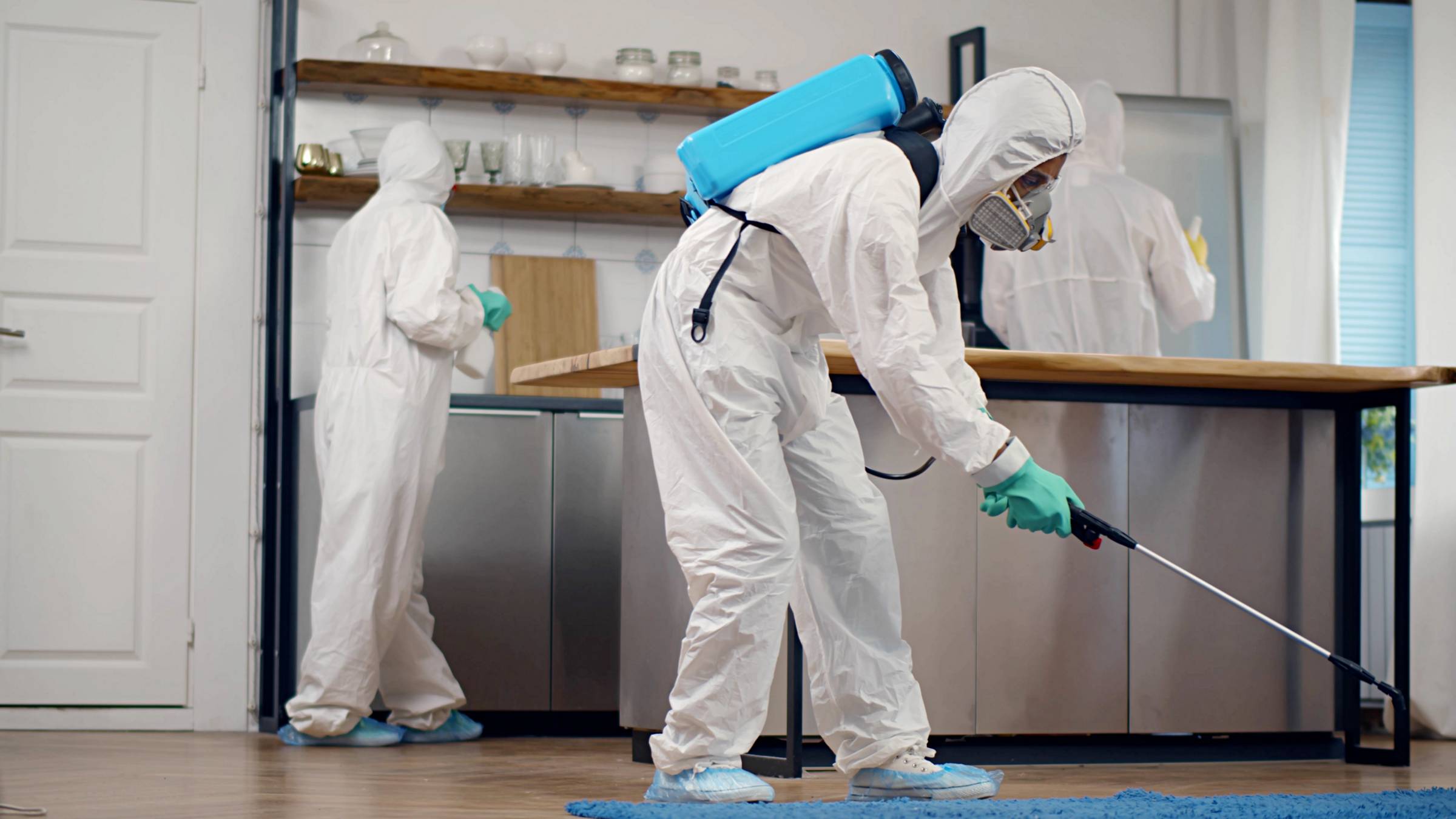
You can definitely learn how to get rid of pantry moths, but working with an exterminator is often more beneficial than going DIY for the following reasons:
They can perform a deeper investigation of the infestation. For example, they can determine the root cause. They also know the different types of pantry months and how they vary from other insects, such as termites, that can wreak havoc in your home.
These professionals have the tools and equipment. Supplies such as sprays for treated surfaces may be far more effective in getting rid of insects once and for all. They also eradicate pests more quickly.
Their services can also include helpful add-ons. These may be general liability insurance or work guarantee, which means professionals can redo the job if the results are unsatisfactory.
Airtasker simplifies the process of finding a reliable pest control specialist for the job through three steps:
Sign up for an account - it is free!
Post a task. Indicate your pest control budget, the services you want, and other essential details.
Use the site’s extensive database to connect with nearby exterminators or receive proposals from them.
Pantry moths might not give you a full-blown sickness, but they can cause serious problems, such as a lot of wasted food and headaches when renovating your kitchen. Tackle these critters ASAP by calling a pro pest specialist who can banish them for good.
FAQs on pantry moths
Pantry moths in the UK usually enter the home by infiltrating the food supplies coming from the outside. Once inside, they can mate and lay pantry moth eggs, which can transform into adults in about a month.
Clothes moths (sometimes known as closet moths) and moths in the pantry are not the same, even if they share a similar appearance and are more active during warmer months. Unlike clothes moths, which love dark places, these pantry pests are attracted to light when they become adults. Moreover, pantry moth larvae turn into pupae within weeks. Clothes moths can take months or years before they fully develop.
One of the best natural moth-repellent options is bay leaf essential oil because these insects do not like the scent. However, if you want to keep the pantry moths forever out of your house, work with an exterminator who can treat and maintain the pantry.
Find pest control, fast
Find a Pest Control specialist
Related articles
Related price guides
